I’ve been working recently in a proper kitchen, not my own 12 by 4 foot galley but one that feeds people in need. It’s one of twelve community hubs around the world created by Massimo Bottura, owner-chef of three Michelin-star Osteria Francescana in Modena, Italy. From the homeless to refugees, there are around 65 diners at each sitting. Often, chefs from the professional kitchens of London hotels and restaurants volunteer to cook, so us junior crew of vegetable choppers and order-followers swivel to adjust to different systems and different degrees of short temper from the male chefs who clearly turn to Gordon Ramsey as a role model.
But for the past week, there’s been an Italian woman in charge. She insists on the title ‘cook’ not ‘chef’ and her level of calm should be bottled for sale.
What’s been interesting is the tricks each chef brings to the cooking process. One, poised to make a Mediterranean-flavoured beef stew, first brewed up a small pot of espresso. Ho ho, late night, I thought. No. It was introduced into the slowly bubbling vat of meat.
Another used a microplane usually dedicated to Parmesan to mince copious unpeeled cloves of garlic. The job was accomplished at lightning speed, the husks of the garlic falling to the counter as the cloves turned into a pulp.
One chef used Marmite in place of crushed anchovies to introduce ‘umami’ to slow-braised lamb. Another, making a sauce for pasta, drained the canned tomatoes of their liquid and slid them into a pan of oil, sprinkled them with a little sugar then slowly sauteed them until they began to catch and caramelise. Only then did he loosen them with the reserved juices from the cans, scraping up the fudge and turning the puree into a deeply flavoured sauce.
Some of these hacks are familiar. But Angela, a kitchen angel and the only female chef in the recent period, introduced two new wheezes. She uses very little salt in her dishes. Instead, she squeezes endless halves of lemon into them until they taste surprisingly saline. She wasn’t entirely against sodium. If the lemon juice hadn’t quite hit the spot, she would adjust the seasoning with a restrained quantity of salt. At this point, more lemon juice would have overwhelmed the finished dish.
An avid despiser of waste, her second revelation concerned cauliflowers, which she was roasting to go with the main course. Angela didn’t throw away the outer leaves and cores. Instead, she instructed us to julienne them, soften them at the stove in butter then cover the greens in water and milk to simmer into a puréed soup. The finished result only differed from an elegant Crème Dubarry, which is made from the florets of a cauliflower, in that Angela’s finished soup leaned away from ivory in colour towards a pale jade.
At the end of Angela’s shifts, very little had gone into the garbage bin, unlike the other chefs who filled them twice over.
In the developed western world, around one third of every household food shop goes to waste and landfills. Average American household waste amounts to roughly 92 billion pounds of food binned annually. Even in the forty times smaller UK, 95kg/209 lbs of food per person per year is wasted. (My own solution is a ban on those hangar-sized fridges, filled to the gunnels because they look so un-American Dream unless stuffed. But you’d have to get the architects of new urban developments to include food stores you could walk to in their plans - absent, along with local taverns and community gathering places, pretty much since Levitt towns were created after the war.)
Soup kitchens depend on supplies of food the public disparages, ignoring at the supermarket perfectly edible produce but with a swiftly approaching ‘Use By’ date. Top of this list from recent deliveries made to Refettorio Felix’s community kitchen from food redistribution charities seems to be crates of those cauliflowers.

The celebrated mistress of Louis XV of France, Madame du Barry, would have been shocked. She was an ardent fan, along with most of France’s 18th century court. Its chefs created Crème Dubarry in her honour.
I’d always thought cauliflower a Northern European brassica. But travelling through Burma, I saw them in every market. (Before you rush to correct me, I learned when I was there the year before nearly one million Rohinga fled horrific violence at the hands of the military regime, that calling the country Myanmar is considered by opponents of the government to reveal support for the junta.) Some were the largest cauliflowers I’ve ever come across, the size of the head of a pig.
One of the best of local cauliflower dishes was a tumble of steamed florets served over rice noodles. A dressing was made from lime juice, Nam Pla fish sauce (soy can substitute for vegetarians), sesame oil, sugar and finely diced green chili, followed by a scattering of shards of the whites of scallions and, unexpectedly, a generous quantity of finely chopped mint.
It was the Arabs who developed the cauliflower, during the Middle Ages. The best seeds came from Aleppo in northern Syria, in the 1690s. Cauliflowers long flourished around Kythrea, a town north east of Nicosia in Cyprus. Elias of Pesaro, a Jewish-Italian scholar and traveller known for writing on life in Cyprus, wrote home in 1563 that cabbages and cauliflowers could be found in abundance in Cyprus. “For a quattrino one can get more almost than one can carry.”
Using Angela’s principles of not chucking out anything that could be cooked, I give you a no-waste version of Crème Dubarry which I’m sure would have passed muster with Madame du Barry, even if it doesn’t involve the original’s unctuous egg yolks and cream liaison. If you use less liquid, it makes a good pasta sauce for penne or rigatoni.
Serves 4-6
The leaves and peeled core of a large cauliflower
55g/2oz butter
3-4 shallots, peeled and chopped (don’t worry about finely, you’re going to blitz them)
1 litre/1¾ pints 50-50 water and milk or stock and milk
juice 1 lemon
100g/3½ fl oz heavy cream, crème fraîche, or full fat Greek yogurt (0% yogurt is pointless)
salt and white pepper to taste
chives or parsley, finely minced (optional)
Julienne (slice into strips) the leaves, and roughly chop the core of the cauliflower.
Melt the butter in a large pot and sweat the shallots over medium-low heat till soft, stirring every now and then. Add the cauliflower bits and pieces and turn them in the buttery shallots for a couple of minutes.
Add the liquid, put the lid on, lower the heat, and simmer until the vegetables are soft, about 20-25 minutes.
Whizz into a puree then pass through a fine sieve. This should be a silky smooth soup, not a rustic one. But if you’re making the recipe as a pasta sauce, you don’t need to do this. Return to a clean pan, stir in the lemon juice, add the dairy you’ve chosen (or omit it) and adjust the seasoning to taste then serve with a swirl of olive oil or a knob of butter and a sprinkling of chopped herbs. Croutons fried or baked in butter are never a bad thing in soup…


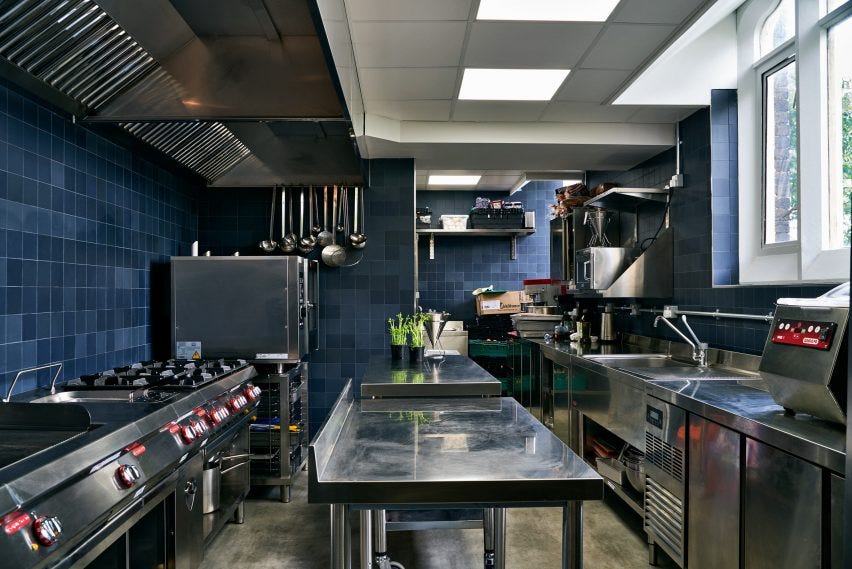
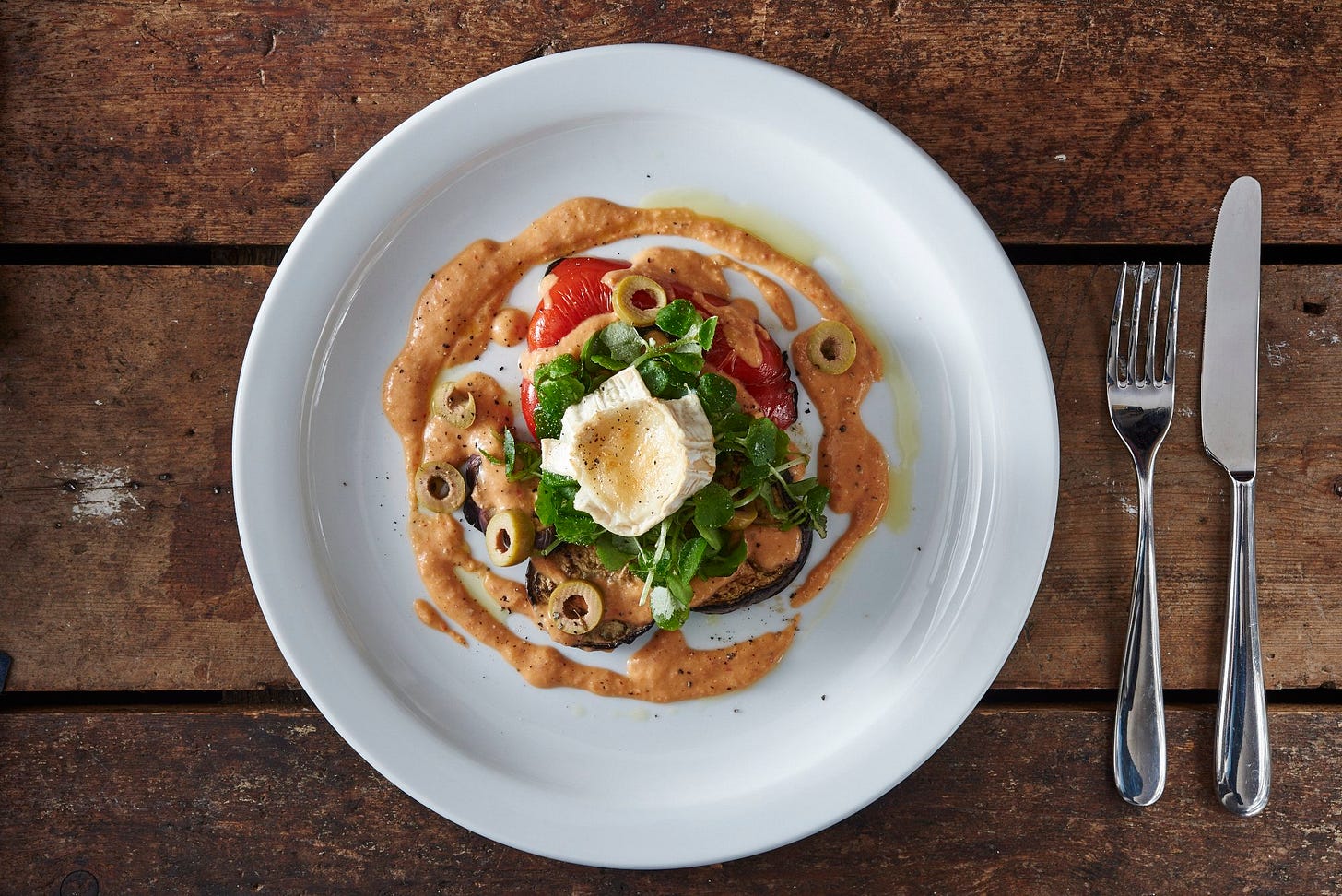
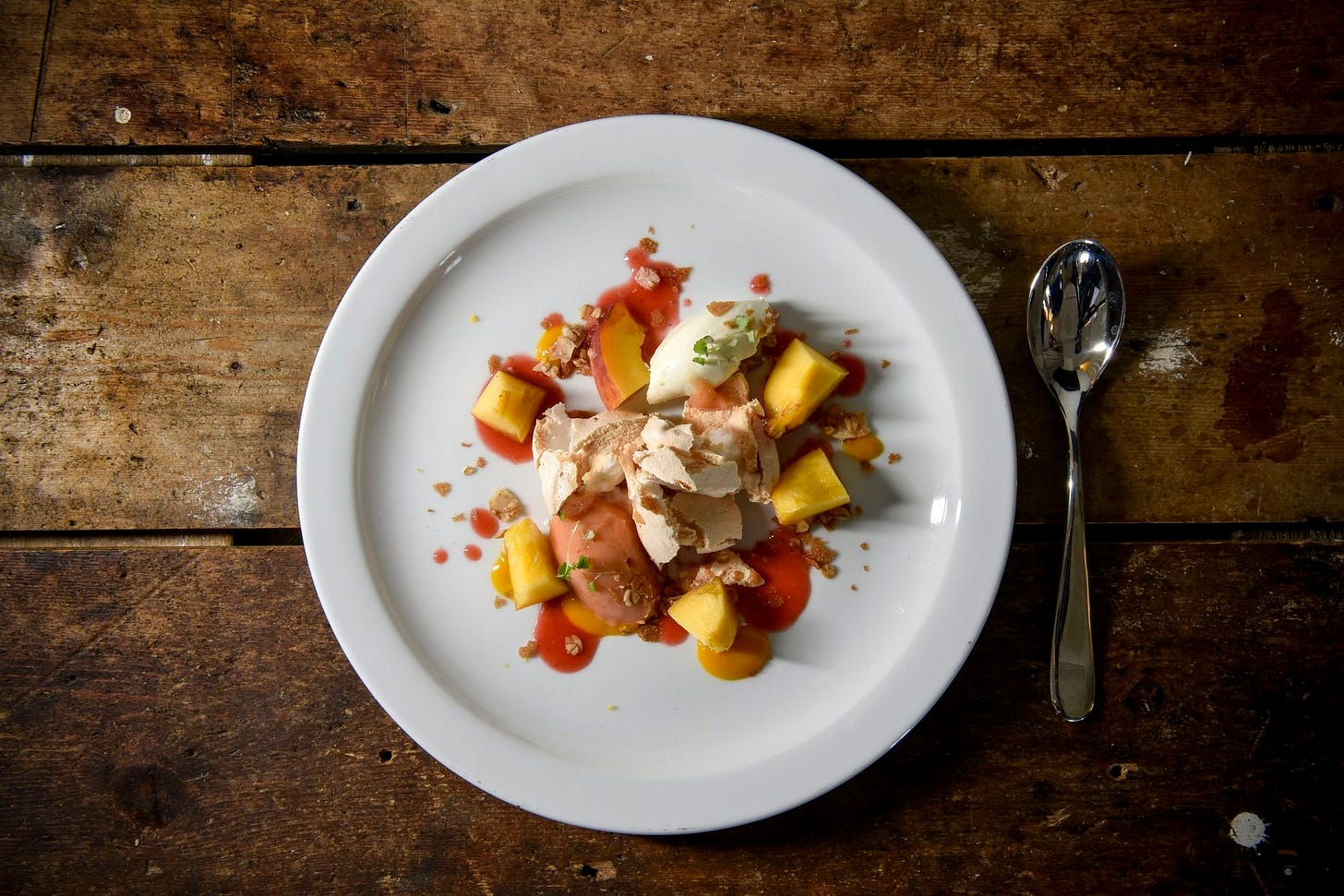

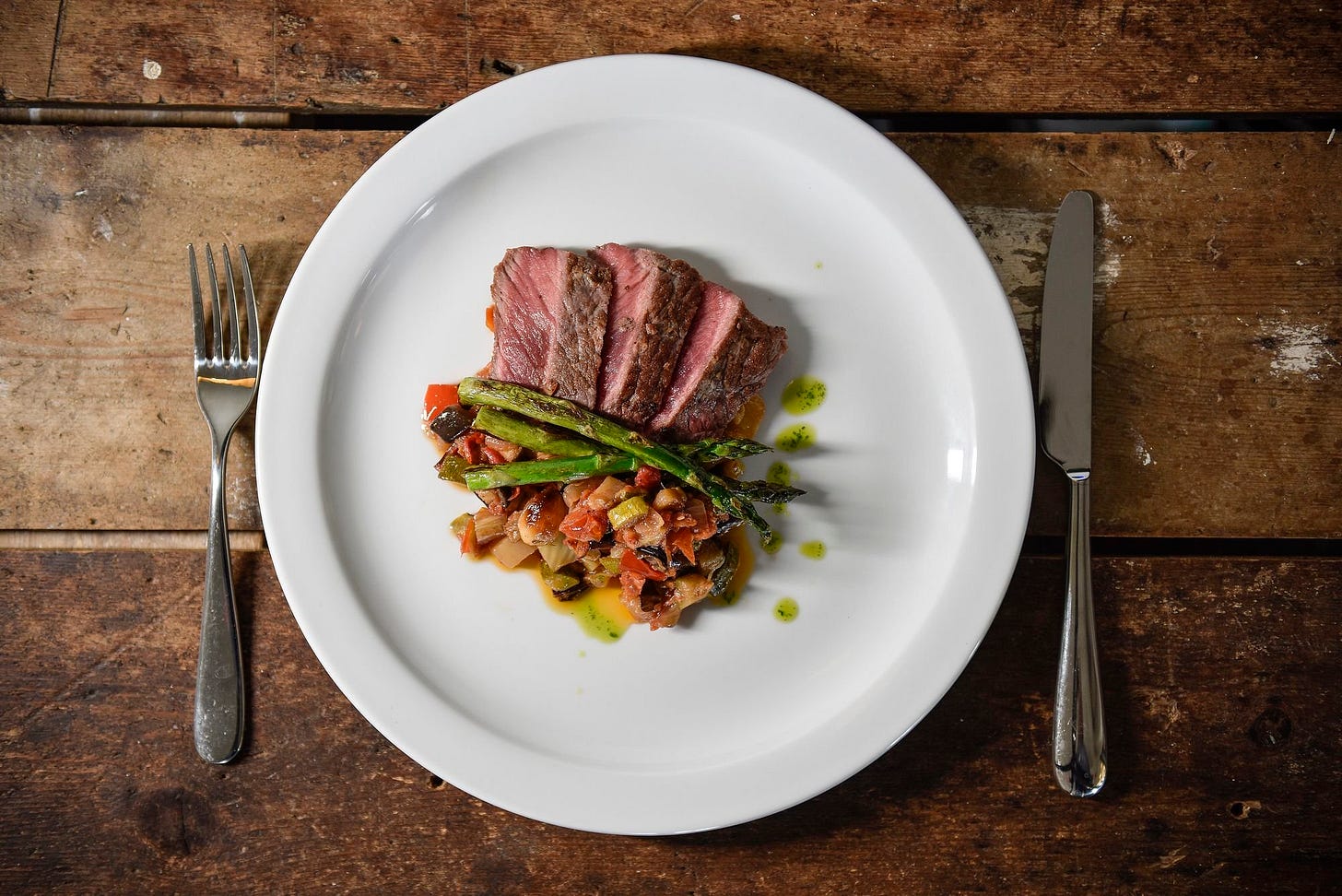
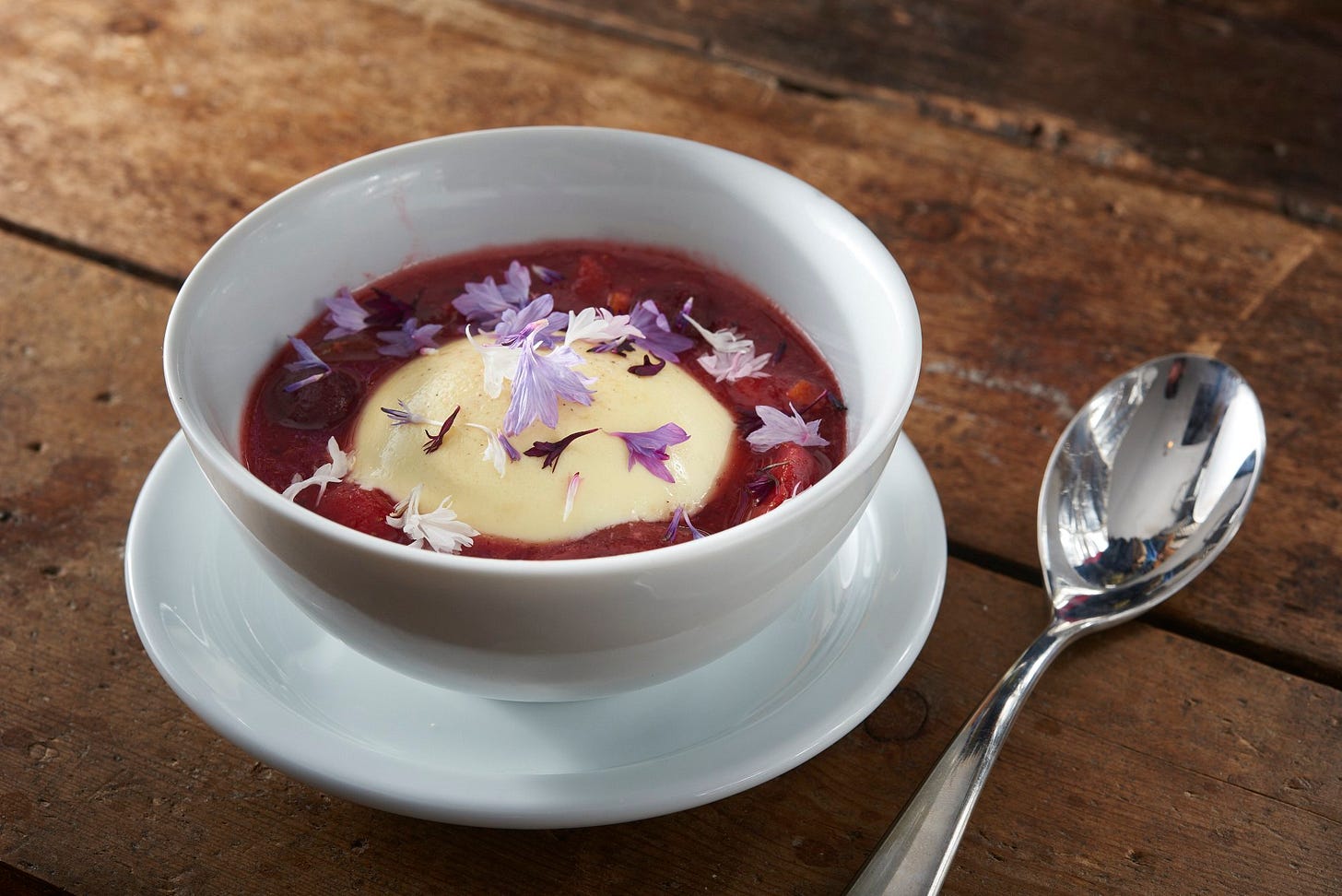



Such generosity in your comment - thank you. I'm glowing. I wish I could say the photos were taken by me, but they are Refettorio Felix's. The food always looks restaurant-worthy because the diners are.
As always, your story about the food is as fascinating as the recipe. Thank you